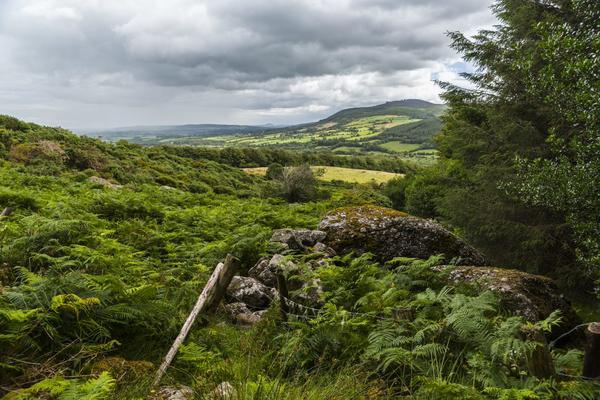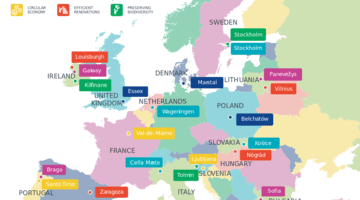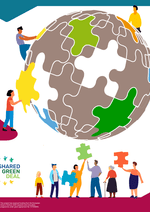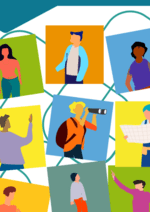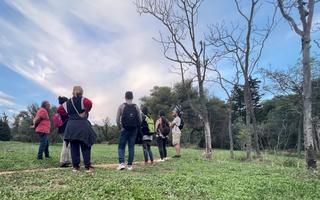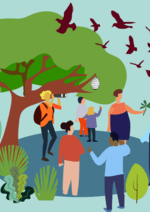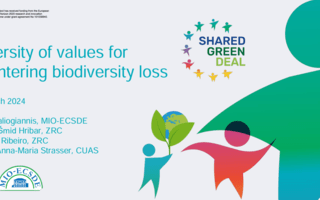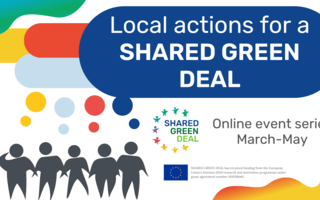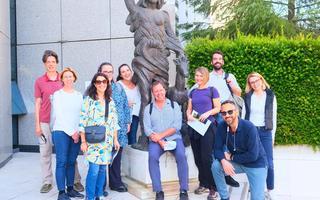Stop, Look and Listen: Preserving the Biodiversity of Ballyhoura
Ballyhoura is a region with evidently high biodiversity, whether it is the native pygmy shrew, various bat species, red squirrels, moths, beetles, and our goal is to highlight its importance. This experiment will seek to educate the participants on how to preserve our biodiversity, by supporting them to stop, look and listen to the biodiversity in our region, and to take note of what they see and hear, and also what they don’t.
Local context
The Ballyhoura Region (BR) is a predominantly rural area in the mid-west of Ireland, composed of 54 communities, 6 of which have a population of over 1,000 inhabitants. Ballyhoura Development (BD) strives to build empowered inclusive communities that understand, value and protect the natural and built environment through a range of community-led and community-focused projects and programmes. By working in and with local communities and other stakeholders, BD aims at fostering a whole-of-community approach to the preservation of local biodiversity.
The physical environment of the BR is diverse, ranging from pastoral landscapes in the lowlands to biodiversity-rich uplands in the Galtee and Ballyhoura Mountains. The region is also home to lakes, waterways, parklands, woodlands, forestry, and peatlands rich in natural beauty and biodiversity, not forgetting the biodiversity that flourishes in urban areas. This biodiversity is readily accessible to residents and visitors alike.
Specific needs and challenges
The need for this social experiment was identified from baseline surveys and a community needs analysis undertaken in the Ballyhoura region. These identified that most residents felt ‘uninformed’ about biodiversity, and that many did not know how to go about improving biodiversity in their local areas. This project will focus on educating and raising awareness on biodiversity, and supporting participants to initiate and develop positive change in their community. An environmental education model will be developed through the project, and this will be used to support future learning and to sustain the impacts of this project.
The challenges for this experiment include working with 54 communities in the Ballyhoura catchment area and limited public transport links in the region. This could make it challenging for participants to access the study circles and associated activities, however we have tried to address this by planning for transport to and from events.
Detailed description of the experiment
The activities foreseen through this experiment will be centered around the market town of Kilmallock as it is a relatively central location. However, the experiment will include several field trips: potential destinations include Griston Bog, looped walks in the area, a hay meadow, and exploring the biodiversity of an urban area. Potential activities include photography, video creation, and storytelling.
This social experiment will raise awareness on biodiversity loss and encourage residents of the Ballyhoura catchment area to embrace and value the social capital of biodiversity. It will use creative activities to encourage participants to value biodiversity, and they will be supported to become ambassadors for biodiversity in their own communities. The development of a learning model will help to ensure that this project has a sustained impact and that it will be a catalyst for further biodiversity education.
Key to the experiment will be working with participants to raise their awareness that biodiversity is everywhere - whether it is in the sky, in water, on the land, or under our feet, and empowering participants to protect, assist, promote, foster, and regenerate local biodiversity. The study circles and field trips will facilitate participants’ understanding by having them look at, feel, touch, learn, and value the biodiversity intrinsic to waterways, peatlands, uplands, pastures, and urban life.
The environmental learning model developed will underpin the development of future community-led initiatives to mitigate against climate change. Our project implementation approach will remain flexible; however, the experiment will facilitate inclusivity, support empowerment, and improve local knowledge through training, peer learning, and networking. We anticipate that the outcomes of this experiment will inform local policy on biodiversity through the Limerick Development Plan and Cork County Development Plan.
Involvement of the target group
The project will seek to recruit participants and raise awareness amongst 6 marginalized target groups, of the challenges facing local biodiversity across the different habitats in the Ballyhoura Region. Target groups include: Older adults (over 55 years old); People with disabilities; One-parent households; Low paid workers; Carers and Long-term unemployed.
There is an urgent need to bring marginalized community members and cohorts on board with conversations and initiatives around local biodiversity, since it is only by ensuring marginalized communities and groups are included that whole-of-community approaches can be effective; this principle is core to all Ballyhoura Development’s work.
Partners
The stakeholders in this experiment will be local organizations working in the field of preserving biodiversity in the Ballyhoura region, including: Active Retirement groups, Farmers, local tourism organizations, BD Staff, work reactivation schemes (TÚS and Rural Social Scheme (RSS)), and Tidy Towns Groups.
All these stakeholders have a different outlook and vision for what they want, and understanding their individual perspectives is important. They all can give a different understanding of what biodiversity is, whether it is from the farmers and how they manage their land, the urban dwellers and how much space they give to rewilding and habitat creation. To the scheme workers who work hand-in-hand with communities and Tidy Towns groups to enhance the local environment and manage the spaces that biodiversity needs to survive.
Local partner
Ballyhoura Development CLG
Country
Ireland
Number of inhabitants
88,000
City
Ballyhoura Region
Website/social media
Contact person:
Rhiannon Laubach
rlaubach [at] ballyhoura [dot] org
June
Launch of the "Stop, Look and Listen" Study Circle
July
First Study Circle: Discussion and Word Cloud
August
Second Study Circle: Field trip and record of species
September
Third Study Circle: Discussion on future field trips and setting-up a Final Event
Fourth Study Circle: Field trip and record of species
October
Fifth Study Circle: Discussions with local experts
November
Sixth Study Circle: Discussion on Final Event and urban/upland walk
Jan - April 2024
Study Circle Meetings 7, 8, 9 dedicated to the Final Event
Final Event
Related Green Deal Priorities
TIMELINE
Case Study Guides
|
Find out more


CONTACT
For further details please contact co-leads Professor Chris Foulds (chris.foulds@aru.ac.uk) and Professor Rosie Robison (rosie.robison@aru.ac.uk).

This project has received funding from the European Union’s Horizon 2020 research and innovation program under grant agreement No 101036640. The sole responsibility for the content of this website lies with the SHARED GREEN DEAL HAS project and does not necessarily reflect the opinion of the European Union.
